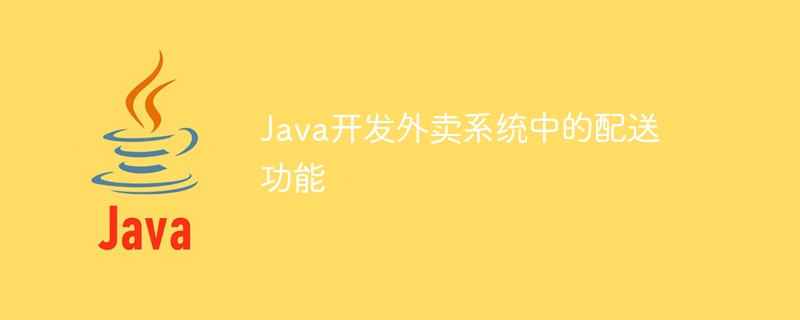Home >Java >javaTutorial >Java develops delivery function in takeaway system
Java develops delivery function in takeaway system
- 王林Original
- 2023-11-01 14:16:571285browse

With the development of the Internet and changes in people's lifestyles, the takeout business is becoming more and more popular. In order to meet user needs, not only a user-friendly ordering system is needed, but also an efficient and reliable delivery system is needed to ensure that food can be delivered on time. In the takeout business, the delivery function developed by Java has become an indispensable part.
First of all, Java's power and flexibility make it an ideal choice for developing takeout delivery systems. The Java language has rich libraries and development tools that can easily implement various functions. In addition, Java is a cross-platform programming language that can run on different operating systems, which makes the system more flexible and not restricted by hardware or operating systems. This means that developers can use Java to develop takeout delivery systems suitable for various terminal devices and operating systems. This flexibility gives developers more options and can better meet user needs.
Secondly, Java's multi-threading and concurrent programming model make it possible to develop efficient distribution systems. In the food delivery business, timely and accurate delivery of orders is very important. Java's multi-threading and concurrent programming model allows developers to easily handle multiple requests and tasks, as well as handle multiple delivery orders simultaneously. In this way, it can not only increase the delivery speed, but also reduce system delays and improve user experience. At the same time, developers can use the thread pool and task scheduler provided by Java to manage and optimize system resources to ensure system stability and reliability.
In addition, Java's network programming capabilities make it easier to develop distributed distribution systems. Takeout delivery involves multiple links, including order receipt, restaurant notification, rider management, etc. Java's network programming capabilities can help developers easily implement these functions. Developers can use Java's Socket programming to implement communication between different modules, and use Java's RMI (remote method invocation) to implement distributed service calls. In this way, not only can the scalability and flexibility of the system be improved, but also the various components of the distribution system can be better managed and monitored.
Finally, the security and stability of Java are indispensable factors in developing a takeout delivery system. Takeaway delivery involves users’ personal information and payment information, so security is very important. Java provides rich security features to protect user privacy and data security. Developers can use Java's encryption and authentication mechanisms to protect the security of user data, and use Java's security manager to control system access permissions. In addition, Java's exception handling mechanism can help developers better handle errors and exceptions in the system and improve the stability and reliability of the system.
To sum up, Java has many advantages in developing the delivery function in the takeout system. The power and flexibility of Java make it an ideal choice for developing takeaway delivery systems. Java's multi-threading and concurrent programming model makes efficient delivery systems possible. Java's network programming capabilities can help developers easily implement distributed distribution systems. At the same time, Java's security and stability can protect users' privacy and data security, and improve the stability and reliability of the system. Therefore, it is a very wise decision to choose Java to develop the delivery function in the takeout system.
The above is the detailed content of Java develops delivery function in takeaway system. For more information, please follow other related articles on the PHP Chinese website!

